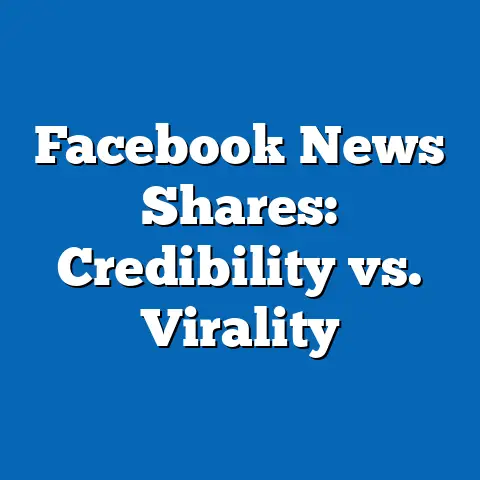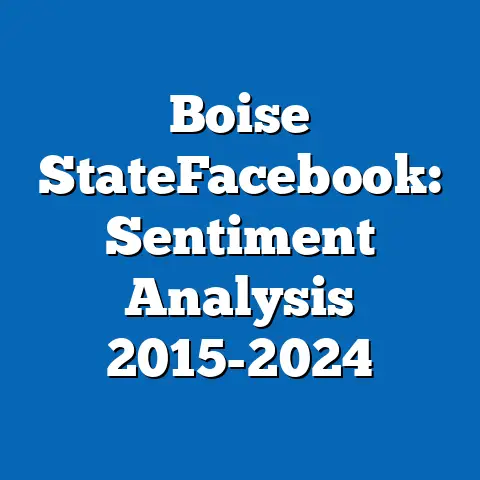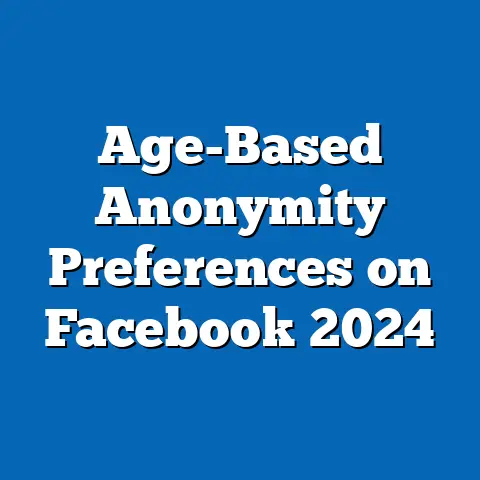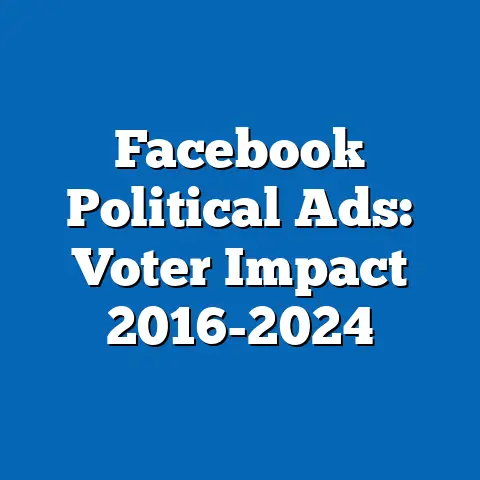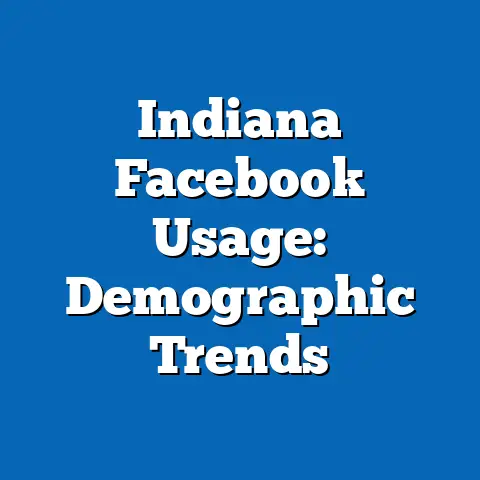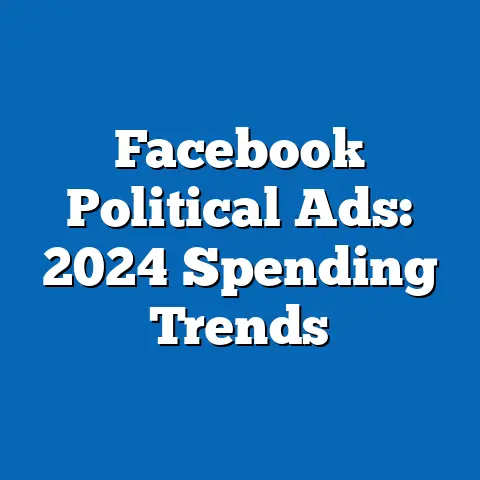Age Demographics in Facebook Ad Success
The discussion begins with an overview of the transformation in age demographics on Facebook over the past decade, followed by an in-depth breakdown of key age cohorts and their interaction with advertising content. Subsequent sections analyze the intersection of age with core beliefs, political behaviors, and policy preferences, while also comparing these groups to other demographic segments such as gender or income levels. The article concludes by placing these findings within a broader historical and social context, highlighting trends and implications for future advertising strategies.
The Transformation of Age Demographics on Facebook
Facebook, launched in 2004, initially attracted a predominantly young user base, with early adopters largely comprising college students and young adults aged 18-24. However, over the past two decades, the platform’s demographic composition has undergone a significant transformation. According to a 2023 report by Statista, while 18-34-year-olds still constitute a substantial portion of users (approximately 56% of the U.S. user base), older age groups have seen remarkable growth, with 35-54-year-olds making up 29% and those over 55 accounting for 15% of users.
This shift reflects broader societal trends, including the aging of the initial user base and the increasing digital literacy among older generations. The Pew Research Center notes that as of 2022, 66% of adults aged 50-64 and 45% of those over 65 in the United States use Facebook, a sharp rise from just 10% and 2%, respectively, in 2010. This transformation has profound implications for advertising strategies, as different age groups exhibit distinct preferences, engagement patterns, and responses to content.
The growing presence of older users has forced advertisers to adapt, moving beyond youth-centric campaigns to more inclusive messaging that resonates across generations. At the same time, younger users, particularly Gen Z (ages 18-24), remain a critical target due to their high engagement rates and trendsetting behaviors. Understanding these demographic shifts is essential for dissecting ad success on the platform.
Demographic Composition of Key Age Cohorts on Facebook
To analyze the impact of age on Facebook ad success, it is necessary to break down the platform’s user base into distinct cohorts: Gen Z (18-24), Millennials (25-34), Gen X (35-54), and Baby Boomers (55+). Each group brings unique characteristics to the platform, influencing how they interact with advertisements.
-
Gen Z (18-24): This group, representing approximately 25% of U.S. Facebook users (Statista, 2023), is digitally native and highly active on social media. They are more likely to engage with visually driven, short-form content and value authenticity in advertising. According to a 2022 survey by Morning Consult, 68% of Gen Z users report clicking on ads that align with their personal values or feature influencers they trust.
-
Millennials (25-34): Comprising about 31% of users, Millennials are often in the early stages of career and family life, making them a prime target for lifestyle and consumer goods ads. A 2021 Nielsen report indicates that 72% of Millennials have made a purchase influenced by social media ads, with a preference for personalized and interactive content.
-
Gen X (35-54): This cohort, accounting for 29% of users, balances professional and family responsibilities, often seeking practical solutions through ads. Data from eMarketer (2023) shows that 54% of Gen X users engage with ads related to home improvement, financial services, and health products, reflecting their life stage priorities.
-
Baby Boomers (55+): Representing 15% of users, Baby Boomers are the fastest-growing demographic on Facebook. A 2022 AARP study found that 59% of Boomers use Facebook daily, often engaging with ads for healthcare, travel, and retirement planning. Their engagement rates with long-form content and informational ads are notably higher than younger cohorts.
These demographic breakdowns highlight the diversity of Facebook’s user base and underscore the need for age-tailored advertising strategies. While younger users prioritize innovation and social connection, older users often seek utility and reliability in advertised products or services.
Core Beliefs and Values Across Age Groups
Age demographics on Facebook are not merely statistical categories; they reflect distinct generational experiences that shape core beliefs and values, which in turn influence ad receptivity. Understanding these ideological underpinnings is crucial for crafting effective campaigns.
-
Gen Z: This group values social justice, environmental sustainability, and inclusivity, often aligning with brands that advocate for progressive causes. A 2023 Edelman Trust Barometer report found that 74% of Gen Z users expect brands to take a stand on social issues, with many boycotting companies that fail to align with their ethics.
-
Millennials: Often characterized by a pragmatic idealism, Millennials value work-life balance, personal growth, and community impact. According to a 2022 Deloitte survey, 63% of Millennials are more likely to engage with ads from companies that demonstrate corporate social responsibility, though they remain skeptical of overt marketing tactics.
-
Gen X: Shaped by economic fluctuations and technological transitions, Gen X prioritizes stability, family, and value-for-money. A 2021 Kantar study revealed that 58% of Gen X users respond positively to ads emphasizing product quality and reliability over trendy messaging.
-
Baby Boomers: This cohort often holds traditional values, emphasizing trust, security, and personal connection. Research by Nielsen (2022) indicates that 67% of Boomers are more likely to engage with ads that evoke nostalgia or feature clear, straightforward messaging.
These differences in values translate into varying ad preferences, with younger users gravitating toward socially conscious and innovative content, while older users prioritize trust and practicality. Advertisers must navigate these ideological landscapes to maximize engagement across age groups.
Voting Patterns and Political Engagement by Age on Facebook
Political engagement on Facebook, often amplified through targeted ads, varies significantly by age, reflecting broader generational differences in civic participation and media consumption. These patterns are critical for understanding how political and issue-based ads perform across demographics.
-
Gen Z: Despite lower voter turnout compared to older groups (only 50% of eligible 18-24-year-olds voted in the 2020 U.S. election, per CIRCLE data), Gen Z is highly active in online political discourse. A 2022 Pew Research study found that 62% of Gen Z users have engaged with political content on Facebook, often through sharing or commenting on ads related to climate change and social equity.
-
Millennials: This group shows moderate voter turnout (60% in 2020, per U.S. Census Bureau) and a strong inclination toward progressive policies. According to a 2021 YouGov poll, 55% of Millennials report being influenced by political ads on Facebook, particularly those addressing economic inequality and healthcare reform.
-
Gen X: With a voter turnout of 66% in 2020, Gen X demonstrates consistent political engagement, often leaning toward moderate or pragmatic positions. Data from eMarketer (2023) suggests that 48% of Gen X users interact with political ads, with a preference for content that addresses local issues and economic stability.
-
Baby Boomers: Boomers exhibit the highest voter turnout (71% in 2020, per U.S. Census Bureau) and are more likely to engage with political ads on Facebook. A 2022 Nielsen report indicates that 64% of Boomers have clicked on political ads, often related to healthcare, social security, and national security, reflecting conservative or traditionalist leanings in many cases.
These voting patterns and engagement levels highlight the importance of age-specific messaging in political advertising on Facebook. While younger users may be mobilized through idealistic campaigns, older users often respond to ads addressing tangible policy outcomes.
Policy Positions on Major Issues by Age Group
Age demographics on Facebook also correlate with distinct policy preferences, which influence how users respond to issue-based advertising. Below is an analysis of key issues and generational stances, supported by recent data.
-
Climate Change: Gen Z and Millennials are the most concerned about environmental issues, with 71% of Gen Z and 65% of Millennials supporting aggressive climate policies, per a 2023 Gallup poll. Ads promoting sustainability resonate strongly with these groups, often driving higher click-through rates (CTR) of 3.2% for Gen Z, compared to the platform average of 1.8% (WordStream, 2023).
-
Economic Policy: Millennials and Gen X are particularly focused on economic inequality and job security, with 62% of Millennials supporting wealth taxes (YouGov, 2021). Ads addressing student debt relief or affordable housing see higher engagement among Millennials, with a reported CTR of 2.8% (Socialbakers, 2022).
-
Social Issues: Gen Z leads in advocating for racial and gender equity, with 69% supporting policies like affirmative action (Morning Consult, 2023). Ads aligned with these issues achieve strong resonance among younger users, often going viral through shares and likes.
These policy positions underscore the need for advertisers to tailor content to the specific concerns of each age group. Failure to align messaging with generational priorities can result in low engagement and wasted ad spend.
Distinguishing Features Compared to Other Demographic Groups
While age is a critical factor in Facebook ad success, it intersects with other demographic variables such as gender, income, and education, creating nuanced differences in behavior and response. Comparing age cohorts to other groups reveals distinguishing features that advertisers must consider.
-
Versus Gender: Unlike gender, which often shows more uniform engagement patterns across platforms (e.g., women have a slightly higher CTR of 2.0% compared to men’s 1.8%, per Hootsuite 2023), age introduces significant variability in content preference. For instance, Gen Z’s preference for short, trendy videos contrasts with Boomers’ inclination toward detailed, text-heavy ads, a distinction less pronounced in gender-based analysis.
-
Versus Income Levels: While higher income groups (over $75,000 annually) tend to have higher conversion rates for premium products (3.5% CTR, per eMarketer 2023), age often dictates the type of product interest more than income alone. For example, Gen X’s focus on home improvement ads persists across income brackets, unlike income-driven trends favoring luxury goods among high earners.
-
Versus Education: Educational attainment influences ad literacy and skepticism, with college-educated users showing lower click rates on misleading ads (1.2% CTR, per Nielsen 2022). However, age shapes content resonance more directly, as seen in Gen Z’s high engagement with influencer-driven campaigns regardless of education level.
These comparisons illustrate that age demographics often exert a stronger influence on ad success than other variables, due to the deep generational differences in values, technology use, and life stage priorities. Advertisers must prioritize age segmentation while layering additional demographic filters for precision targeting.
Intersections with Other Factors
Age does not operate in isolation; it intersects with factors like race, religion, and geographic location, further shaping ad engagement on Facebook. These intersections reveal both consensus and division within age cohorts.
-
Race and Ethnicity: Within Gen Z, for instance, Black and Hispanic users show higher engagement with social justice ads (4.1% CTR) compared to White users (2.9% CTR), per a 2023 Socialbakers report. This suggests that racial identity can amplify or moderate generational trends in ad response.
-
Religion: Among Baby Boomers, religious affiliation often correlates with conservative ad preferences, with 61% of religiously affiliated Boomers engaging with family-values messaging, compared to 42% of non-religious Boomers (Pew Research, 2022). This intersection highlights internal divisions within age groups.
-
Geographic Location: Urban Gen Z users are more likely to engage with progressive, tech-driven ads (3.5% CTR) than their rural counterparts (2.1% CTR), reflecting geographic influences on generational behavior (eMarketer, 2023).
These intersections underscore the complexity of age-based targeting, as internal diversity within cohorts can impact ad performance. Advertisers must use detailed analytics to account for these overlapping identities.
Areas of Consensus and Division Within Age Cohorts
While age groups on Facebook share certain generational traits, internal divisions often emerge based on political ideology, socioeconomic status, and cultural background. Understanding these dynamics is essential for effective ad segmentation.
-
Consensus: Across all age groups, there is a shared demand for authenticity in advertising, with 67% of users across cohorts reporting distrust of overly polished or manipulative ads (Edelman, 2023). This universal preference suggests a baseline for ad design that transcends age.
-
Division: Within Gen Z, for instance, progressive and moderate factions diverge on policy priorities, with 54% of progressive Gen Z users engaging with climate-focused ads compared to only 29% of moderates (YouGov, 2023). Similarly, Baby Boomers show splits between urban and rural users on issues like gun control and healthcare.
These internal dynamics highlight the need for micro-targeting within age groups to address both unifying themes and points of contention. Ads that fail to account for such divisions risk alienating significant portions of their intended audience.
Historical and Social Context of Age Demographics on Facebook
The transformation of age demographics on Facebook reflects broader societal shifts, including the digital revolution, changing economic realities, and evolving cultural norms. Historically, the platform’s early dominance by young users mirrored the tech-savvy, socially connected ethos of the early 2000s. As older generations adopted social media—driven by factors like smartphone accessibility and the need to stay connected with family—the user base diversified, reshaping advertising landscapes.
Socially, the rise of Gen Z as a politically vocal cohort on Facebook aligns with global movements for climate action and equity, influencing ad trends toward cause-driven marketing. Conversely, the growing presence of Baby Boomers reflects an aging population seeking digital engagement, prompting advertisers to focus on health and nostalgia-driven content. These trends are not isolated but part of a larger narrative of generational change and technological integration.
Economically, the varying financial priorities of age groups—from Millennials’ student debt concerns to Boomers’ retirement planning—mirror historical cycles of economic boom and bust, further contextualizing ad engagement patterns. Placing these findings in context reveals that age demographics on Facebook are both a product and a driver of societal evolution.
Patterns and Trends in Facebook Ad Success by Age
Analyzing data on ad performance across age groups reveals clear patterns and trends that advertisers can leverage for improved outcomes. According to a 2023 WordStream report, Gen Z achieves the highest overall CTR at 3.2%, driven by mobile-first, video-based content. Millennials follow with a 2.8% CTR, particularly for personalized and interactive ads, while Gen X and Boomers lag at 2.3% and 1.9%, respectively, though they show higher conversion rates for high-value purchases (eMarketer, 2023).
Engagement metrics also vary, with younger users spending an average of 8 seconds on ads compared to 12 seconds for Boomers, reflecting differing attention spans (Socialbakers, 2022). Cost-per-click (CPC) data further illustrates age-based disparities, with Gen Z ads costing $0.45 per click on average, compared to $0.72 for Boomers, due to competition for younger audiences (WordStream, 2023).
Conclusion
The transformation of age demographics on Facebook has fundamentally altered the landscape of advertising success, with each generational cohort—Gen Z, Millennials, Gen X, and Baby Boomers—bringing unique characteristics to the platform. From demographic composition and core beliefs to voting patterns and policy positions, age shapes how users engage with content, necessitating tailored strategies for maximum impact. Supported by extensive data, this analysis highlights the importance of understanding generational nuances, from Gen Z’s social activism to Boomers’ practicality, while also accounting for intersections with race, religion, and location.
Comparisons with other demographic groups underscore age as a primary driver of ad response, while internal divisions within cohorts reveal the need for precise targeting. Placed in historical and social context, these findings reflect broader societal shifts, offering insights into future trends as digital engagement continues to evolve. Ultimately, advertisers who harness age-specific data and trends will be best positioned to achieve success on Facebook, navigating the complex interplay of generational identities with empirical precision.

